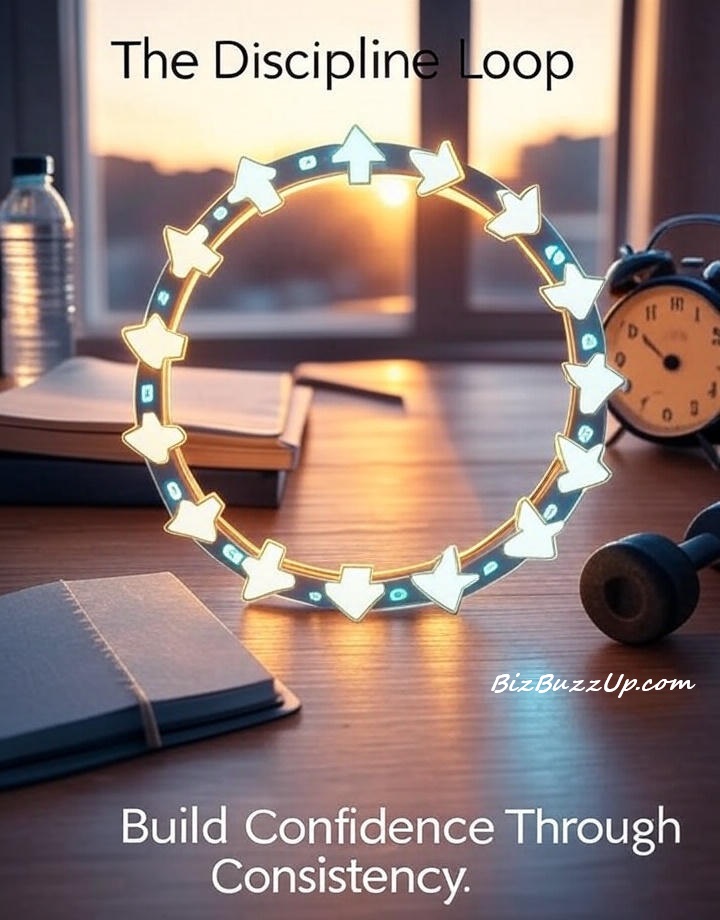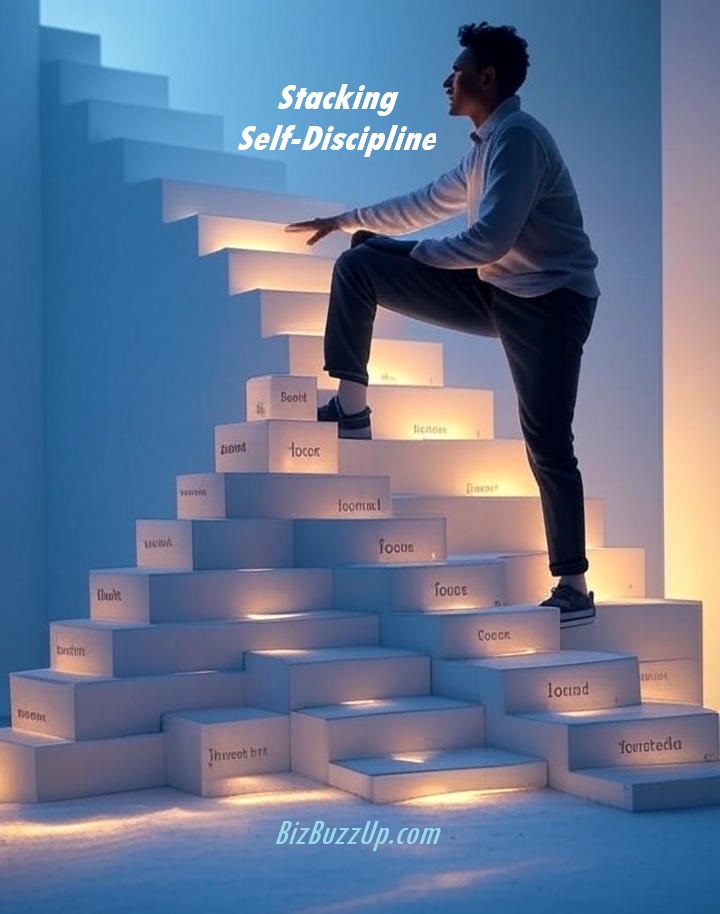
🚨 Step 1: Recognize the Signs of Chaos Early
Discipline slips quietly — missed alarms, skipped meals, unchecked to-do lists. Recognizing these signs early is essential to avoid full breakdowns. Cluttered thoughts, mental fatigue, and feeling like you’re always catching up are indicators you need a reset discipline moment. Awareness empowers action. Don’t wait for everything to collapse before addressing it. The earlier you act, the faster you regain momentum. If you’ve already slipped, remember it’s never too late to recalibrate. Here’s how to get back on track — without guilt or self-blame.
Why Awareness Matters
Staying aware of your emotional and physical state helps you catch problems while they’re small. Look out for resistance to routines, increasing procrastination, or feeling overwhelmed. Noticing these cues is your first win toward regaining control.
🧭 Step 2: Choose Your Reset Point
You don’t need to fix everything at once. Start with a micro-reset: a clean workspace, 10 minutes of silence, rewriting your top 3 priorities, or simply hydrating and walking. Micro-resets, explained in detail in The Power of Micro-Resets, are quick and effective because they address the moment — not the whole mess. This mindset keeps you moving forward instead of freezing in guilt or overwhelm.
Examples of Reset Points
A few actionable micro-resets include deep breathing, short journaling, or decluttering your immediate space. Each one signals to your brain: the chaos ends here, and control begins now.
🔄 Step 3: Refocus With Clarity — Not Chaos
After resetting, avoid diving into everything at once. Overloading yourself can lead right back to chaos. Instead, pick one habit or area of focus to restart. Ask yourself: What’s one thing I can do today that will make me feel more in control? Simplify and prioritize. Clarity cuts through the noise, while urgency only amplifies it. This step is where your discipline begins to rebuild sustainably and effectively.
Clarity Techniques
Write down the top three tasks that will have the most impact. Eliminate unnecessary items that only drain energy. Use mental cues, like positive affirmations, to stay focused on what matters most today.
🧱 Step 4: Rebuild Using a System
Willpower alone is weak — systems are strong. Create repeatable routines that make self-discipline automatic. As outlined in Stacking Self-Discipline, habit stacking attaches new behaviors to existing ones for ease and consistency. For example: morning coffee → write an affirmation. After lunch → take a walk. These routines build momentum without requiring constant mental energy. Structure removes decision fatigue and promotes progress.
System-Building Tips
Write your routine on a calendar, set reminders, and create visual triggers in your environment. Systems should fit your life, not disrupt it — ensuring your self-discipline system is sustainable and reliable.
Struggling to stay focused and not throw in the towel?
This engaging TEDx talk by Chris Bailey reveals why our minds wander—and how to regain mental focus to push past moments of doubt.
About Chris Bailey: Chris is a productivity expert and author of *The Productivity Project*. Through his TEDx talk and books, he explores how simple mindset shifts and practical habits help people regain focus and self-discipline—even when they feel like giving up.
🔥 Step 5: Fuel Discipline Without Burnout
As you rebuild, resist the urge to go too fast. Burnout happens when we confuse intensity with effectiveness. Sustainable progress is rooted in balance and self-respect. In Self-Discipline Without Burnout, we show how pacing yourself protects your energy and extends your discipline journey. Remember: progress is progress, no matter how small, and overloading yourself only delays your goals.
Self-Care While Building Discipline
Incorporate recovery days, celebrate small wins, and don’t punish yourself for needing rest. A rested mind and body perform better, which fuels consistent progress without draining you.
✅ Final Thoughts: You’re Not Starting Over — You’re Recalibrating
Discipline isn’t about perfection. It’s about direction. Every time you reset and rebuild, you prove your resilience. Let go of guilt, take a deep breath, and choose one action today. You’re not starting from scratch — you’re recalibrating your path toward growth and control. Start now, and take one micro-step closer to your goals.
FAQs About Resetting and Rebuilding Discipline
- What is the first step to regain control when feeling overwhelmed? Recognize the early signs of chaos and take a micro-reset action immediately.
- How do micro-resets help with discipline? Micro-resets realign you quickly without wiping out your progress, maintaining momentum.
- What is habit stacking? Attaching a new habit to an existing routine to make self-discipline easier and more automatic.
- How can I avoid burnout when rebuilding discipline? By pacing yourself, including rest, and focusing on sustainable routines instead of overloading.
- Is it okay to slip up in my discipline journey? Absolutely. Setbacks are normal; the key is to reset without guilt and move forward.
For more strategies on mastering self-discipline and staying motivated, visit BizBuzzUp.com.








